Tank Fire Rips Through University Reserve
Impacts on the Coastal Habitats Could Be Major
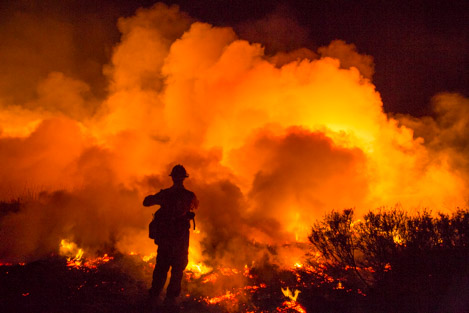
Despite the warnings earlier in the day regarding high winds that would hit our area about 6 p.m. on Thursday, the evening turned out to be a beautiful one in most of Santa Barbara — at least it was until 9:41 p.m., when reports of a vegetation fire in the Devereux Point area began to surface. By 10:30 p.m., as I turned onto Storke Road and began to head up toward the UCSB Family Student Housing area and Isla Vista Elementary School, it was clear the fire was situated farther west and in the middle of the University’s Coal Oil Point Reserve.
For those of you who know the area, the walk around Devereux Slough and the now-defunct Ocean Meadows Golf Course takes you up an old weathered asphalt road to a series of oil tanks not too far from the Ellwood Mesa boundary. Residents near the butterfly groves had feared a fire scenario for years: the type of wind-driven fire that would rush across the Mesa, through the eucalyptus groves, and straight into their homes.
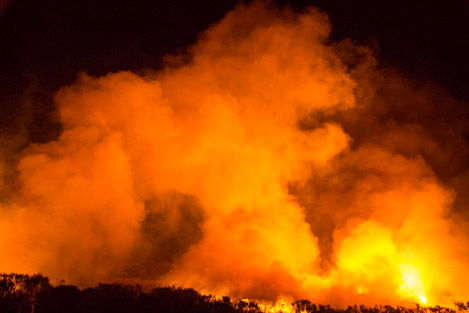
As it turned out, this would not be the case Thursday night as the winds — ranging from a light breeze to 30 mph gusts — were pushing the flames east and slightly to the south, hammering the interior of the Coal Oil Point Reserve. Not too far away, several county firefighters told me at least one person had been detained and was being questioned by Sheriff’s deputies near one of the oil tanks. Another cautioned that several loud explosions or bangs had been heard, and it was unclear what the cause of that was. Later, County Fire spokesperson David Sadecki confirmed that one person of interest had been contacted by law enforcement and that the cause of the explosions could have been a transformer or possibly fireworks.
By 11 p.m., a half dozen engine crews were busy dousing hot spots on the west side of the fire and despite the announcement that there was zero percent containment at that time, it appeared that the dirt road leading south down to the beach near the Ellwood boundary and the north-side asphalt road were fairly secure.
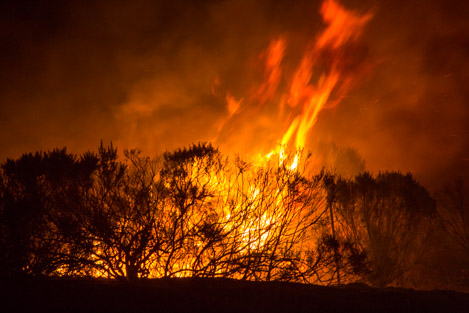
Along with securing the western boundary to prevent the Tank Fire from spreading into the nearby Ellwood Mesa area, County Fire crews began to work their way cautiously around the eastern portion of the Coal Oil Point area on an old dirt road that circles the large meadow area that makes up the heart of the reserve. They moved cautiously because the fire was pushing the flames toward them and because the boundaries of the meadow area were ringed by a long line of eucalyptus trees that firefighters worried could catch on fire and spread embers for hundred of yards.
Sadecki also noted that one residence — more than likely belonging to the reserve caretaker at Devereux Point, which was in the direct line of the advancing flames — had been evacuated, but it was clear by midnight that unless there was a major shift in the wind direction that the fire would burn itself out on the south side as it reached the sand dunes at the ocean’s edge and die down as it moved closer toward Devereux Point.
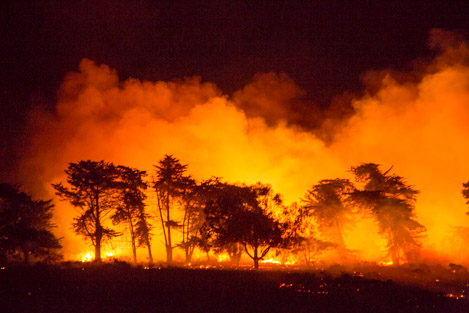
By 12:30 a.m., despite the dramatic flare-ups and numerous small fires burning through parts of the meadow, fears that the entire grove of trees lining the meadow would be engulfed did not materialize, though at one point one of the eucalyptus trees did go up. But for the most part, it appeared there was not enough fuel to generate the type of flames that were seen earlier when the fire was working its way through more dense coastal shrubs nearer the oil tanks.
By 1 a.m., a dozen more engine crews poured in through a narrow road leading along the north side of student housing and began to reinforce the eastern boundary of the reserve. Their efforts began to focus on keeping the fire south of the line of eucalyptus and fir trees where it would have nowhere to go but toward the ocean, to begin pinching it off as it came closer to the Devereux Slough, and to keep it from crossing the slough in the vicinity of the old, broken-down wooden bridge near its mouth. Firefighters were also aided by the shifting winds that began to blow in a more southerly direction, pushing the flames even more in the direction of the sand dunes and away from the line of trees.
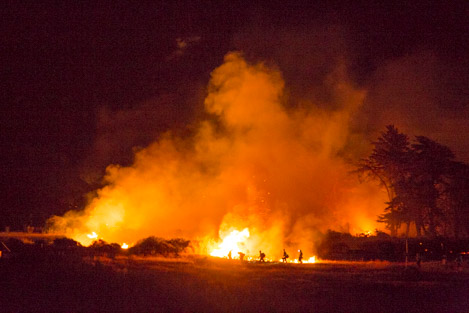
As I left at 2 a.m., the scene was still a dramatic one, with scores of engine crews prowling the perimeter, hundreds of yards of hose line laid along the perimeter, dozens of firefighters with hoses cooling down the hot spots, and a large contingency of engines protecting the oil tanks should the wind change direction.
This morning at 7 a.m., the news appears to be good: The winds continued to die down, the crews appear to be closer to having control over the fire, no structures were lost, and there are no reports of injuries.
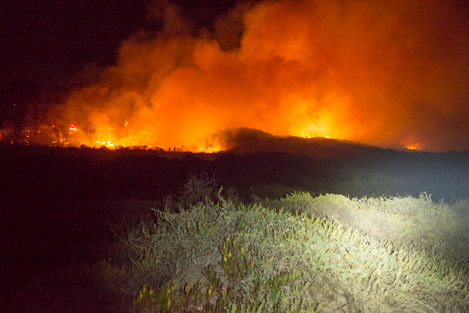
Though not reported on yet, the real loser in this fire will be the Coal Oil Point Reserve itself, and perhaps the colony of snowy plovers that UCSB Reserve Manager Cristina Sandoval has so lovingly protected over the years. For the past decade the University, in collaboration with local native plant specialists, has been pouring time and dollars into restoration projects through the reserve, and much of those efforts may have been destroyed by the fire, estimated this morning to be 20 acres in size. By the end of the day, I’m sure that number will go much higher.
Established in 1970, according to the University, the 158-acre reserve contains “one of the best remaining examples of a coastal-strand environment in Southern California, the Coal Oil Point Natural Reserve protects a wide variety of shoreline and estuarine habitats.” Much of the reserve has been largely undisturbed in recent years thanks to the restoration efforts, but today Cristina and the others who helped in the restoration will be waking up to blackened hills, a major loss to the native plant habitat and potentially catastrophic impacts on the snowy plover populations.



